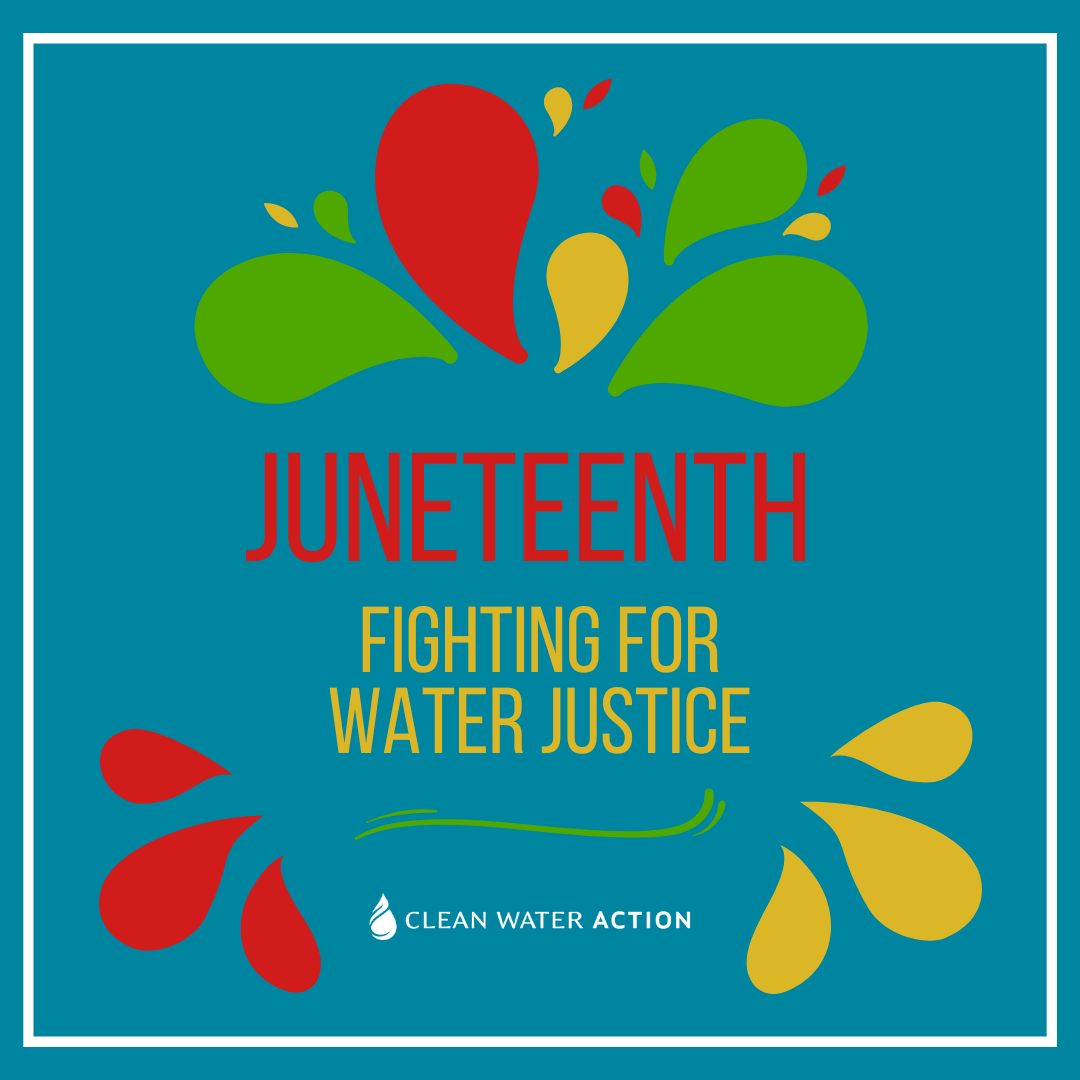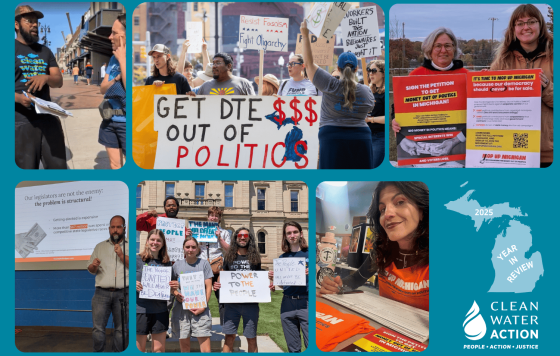
Happy Juneteenth from Clean Water Action! We are proud of our diverse board of staff, and we want to reflect on the intersection between environmental and racial justice on this day and every day.
Juneteenth is a day of celebrating resilience, freedom and unity in the Black community in the US. Juneteenth is celebrated as the day that enslaved Black people were emancipated from slavery in Galveston, Texas on June 19, 1865. African Americans in the US celebrate this day as an instance of shared commemoration. What you may not know is that slavery did not officially “end” on Juneteenth. In fact, the announcement that the Union had won and could enforce the end of slavery came two months after the conclusion of the Civil War, and over two years after President Lincoln issued the Emancipation Proclamation.
Even after Juneteenth, many enslaved Black people in Texas still were not free. Slave owners were unwilling to give up free labor unless forced to by a representative of the government. Some enslaved people who were freed or attempted to get free were attacked and killed (NPR).
When we celebrate this day, it is important to remember the fact that enslaved Black people in the US suffered even after Juneteenth. Juneteenth is a call to action to address the remains of systemic racism and exploitation that exist in the US today as a result of slavery and white supremacy. At Clean Water Action, we are devoted to addressing the long-standing discrimination and environmental injustices that Black communities in the US continue to face.
One way that environmental injustice is able to thrive in the US is due to the racist practice of redlining. Redlining was a discriminatory practice used in the 1930s that indicated which US cities mortgage backers should support. Type A neighborhoods were outlined in green, and were considered safe suburbs that were mostly populated by white Americans. Type D neighborhoods were outlined in red, and determined unsafe and hazardous for their “infiltration of inharmonious racial or nationality groups.” Type D neighborhoods were largely Black and/or working class.
Redlining these neighborhoods was an explicit attempt to deny investment into these areas and businesses to support them. Although redlining was outlawed half a century ago, we still see its impact today. We observe disproportionate environmental issues in historically redlined neighborhoods, many of which are still Black and working class, due to the placement of hazardous and toxic polluting facilities and industries in redlined neighborhoods, as well as major roadways and shipping ports that cut through these areas.
Redlining has also resulted in water infrastructure inequality. One reason for this is because historically, African Americans were placed in neighborhoods that were built with poor water infrastructure or with no water infrastructure at all, with little to no support from city officials. For example, in the late 1940s, African Americans were pushed into the Albina neighborhood in Portland, as it was the only place that they were allowed to live. Close to 40% of Albina’s inhabitants were African American. In 1948, the railroad dike that blocked the Columbia River formed a hole and erupted into massive flooding— but city officials did not warn residents of the dangerously high water levels and opted not to evacuate. The town was wiped out by the flooding, and over a third of African American families were displaced (NPR).
When Hurricane Katrina hit Louisiana in August 2005, many African Americans were unable to evacuate— Black neighborhoods were the most severely damaged, and Black evacuees were less likely to be able to return to New Orleans. Many of these historically Black neighborhoods were formed after slavery, when African Americans were settled in undesirable areas prone to flooding.
Majority Black communities remain vulnerable, and systemic racism has stifled the ability to recover from environmental disasters. According to a report published in March 2019, the National Academies of Sciences, Engineering and Medicine, urban flooding affects a range of demographics, but is most harmful to minorities, lower-income residents, and others without the resources to recover from damage and remain resilient in the face of disruption. The report quotes Chicago residents of a middle income Black neighborhood who told researchers that they “receive less flood protection and are given lower priority.” Flood damage in these neighborhoods is due to poor water infrastructure such as old sewage pipes, stormwater infrastructure deterioration, impervious surfaces and lack of green space, as well as general location. This is not by mistake— these systems were put in place by racist and unjust practices.
Although we have made measurable progress towards achieving environmental injustice, many Black communities are still at risk of disproportionate impacts of flooding, water pollution, disproportionate exposure to toxic chemical pollution, and countless other environmental injustices. It is our responsibility at Clean Water Action to fight for Environmental Justice and address these gaps that cause environmental injustice.
We celebrate Juneteenth by honoring environmental leaders in the Black community, and we honor what it represents by grounding our campaigns in Environmental Justice principles and following the leadership of frontline communities of color.
Sources
- How 'redlining' shaped New Orleans neighborhoods — is it too late to be fixed?
- Investing in Local Water Infrastructure for a Resilient, Livable Future
- Confronting Racial Inequalities in the Water and Wastewater Industry
- The impact of water infrastructure inequality on marginalized communities
- Crumbling pipes, tainted water plague black communities
- Black Communities Facing Brunt of Failing U.S. Water Systems
- The Time Nature And Racism Teamed Up To Wipe Out A Whole Town
- Katrina Washed Away New Orleans’s Black Middle Class
- Flooding Disproportionately Harms Black Neighborhoods
- Environmental Justice through the eye of Hurricane Katrina


